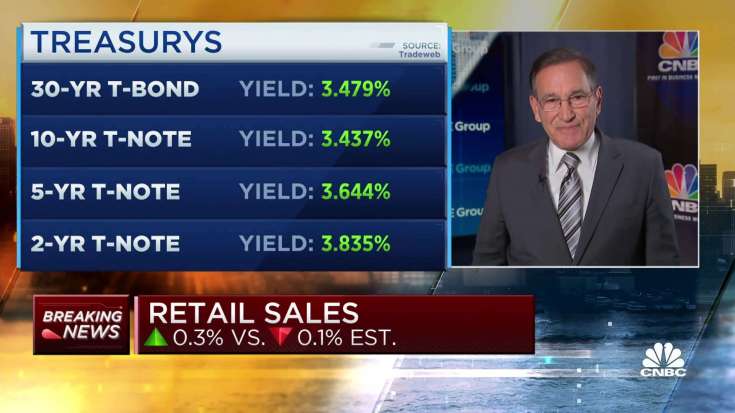
Retail sales numbers were better than expected in August as price increases across a multitude of sectors offset a considerable drop in gas station receipts, the Census Bureau reported Thursday.
Advance retail sales for the month increased 0.3% from July, better than the Dow Jones estimate for no change. The total is not adjusted for inflation, which increased 0.1% in August, suggesting that spending outpaced price increases.
related investing news
Inflation as gauged by the consumer price index rose 8.3% over the past year through August, while retail sales increased 9.3%.
However, excluding autos, sales decreased 0.3% for the month, below the estimate for a 0.1% increase. Excluding autos and gas, sales rose 0.3%.
Sales at motor vehicle and parts dealers led all categories, rising 2.8%, helping to offset the 4.2% decline in gas stations, whose receipts tumbled as prices fell sharply. Online sales also decreased 0.7%, while bar and restaurant sales rose 1.1%.
Revisions to the July numbers pointed to further consumer struggles, with the initially reported unchanged but to a decline of 0.4%.
Also, “control” group that economists use to boil down retail sales, was unchanged from July. The group excludes sales from auto dealers, building materials retailers, gas stations, office supply stores, mobile homes and tobacco stores and is what the government uses to calculate retail’s share of GDP.
“Higher inflation drove the top line sales figure but volumes are obviously falling because on a real basis, sales are negative,” said Peter Boockvar, chief investment officer at Bleakley Advisory Group. “Core retail sales being well below expectations will result in a cut to GDP estimates for Q3 as stated.”
Ian Shepherdson, chief economist at Pantheon Macroeconomics, called the release “a mixed report, but we see no cause for alarm.” He said the slump in housing will depress some related sales numbers, but overall spending should up as real incomes rise.
The retail numbers led a busy day for economic data.
Elsewhere, initial jobless claims for the week ended Sept. 10 totaled 213,000, a decrease of 5,000 from the previous week and better than the 225,000 estimate. Import prices in August fell 1%, less than the expected 1.2% decline.
Two manufacturing gauges showed mixed results: The New York Federal Reserve’s Empire State Manufacturing Index for September showed a reading of -1.5, a massive 30-point jump from the previous month. However, the Philadelphia Fed’s gauge came in at -9.9, a big drop from the 6.2 in August and below the expectation for a positive 2.3 reading.
The two Fed readings reflect the percentage of companies reporting expansion versus contraction, suggesting manufacturing was broadly in a pullback for the month.
The reports, however, pointed to some softening in price pressures. For New York, the prices paid and prices received indexes respectively declined 15.9 and 9.1 points, though both remained solidly in growth territory with readings of 39.6 and 23.6. In Philadelphia, prices paid fell nearly 14 points but prices received increased 6.3 points. Those indexes respectively were 29.8 and 29.6, indicating that prices are still rising overall but at a slower pace.




